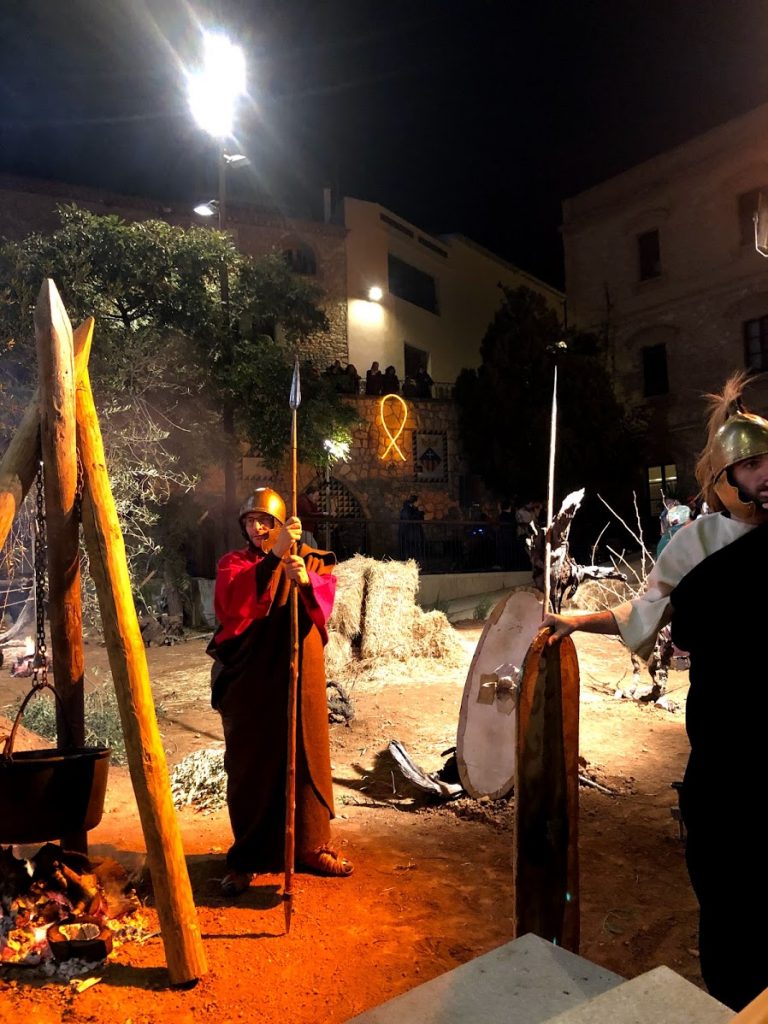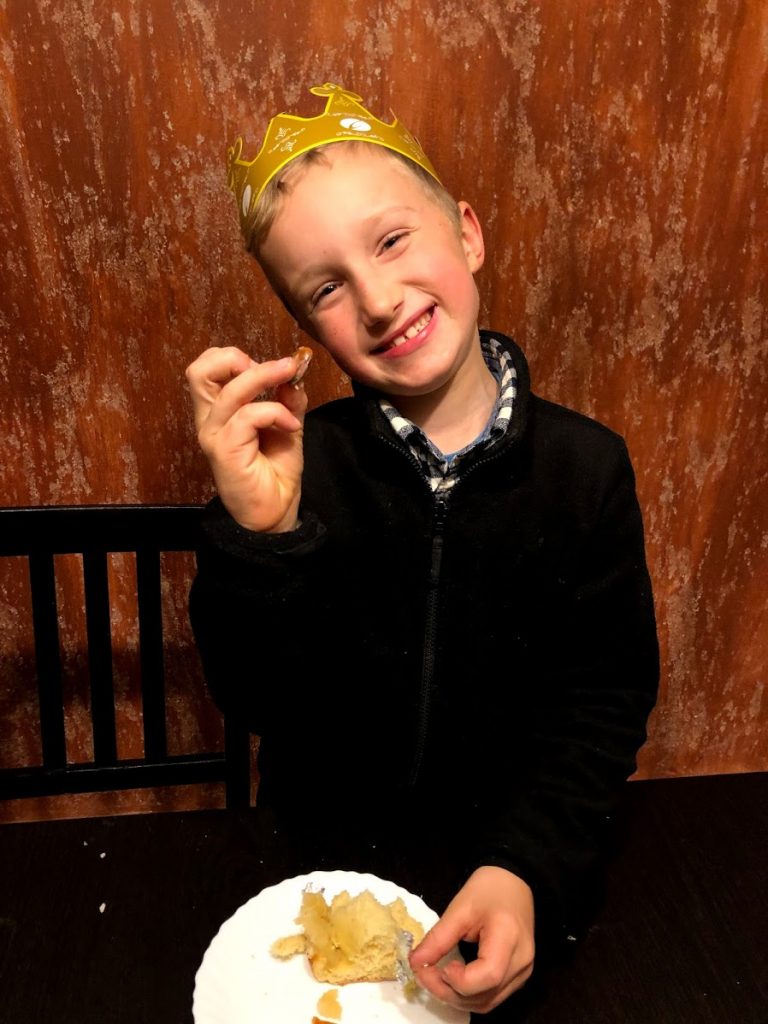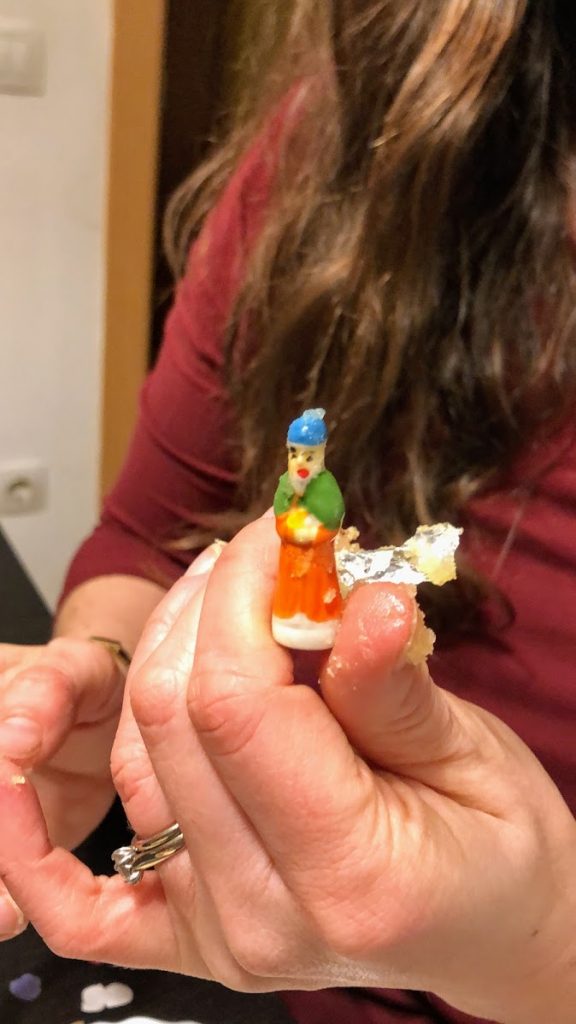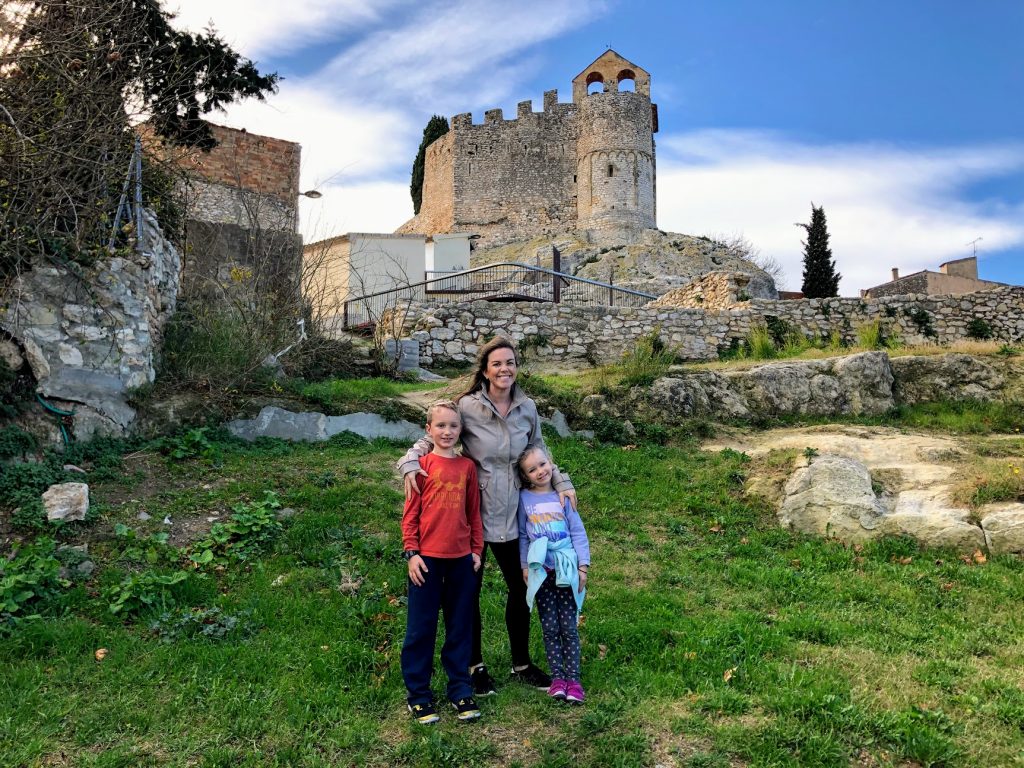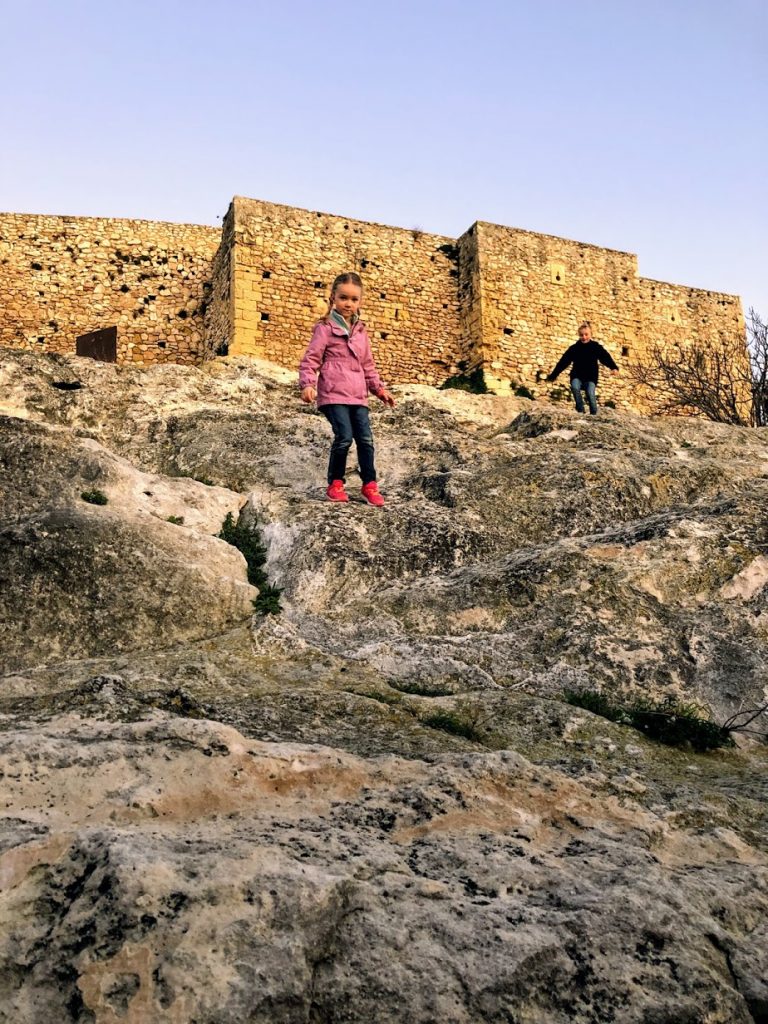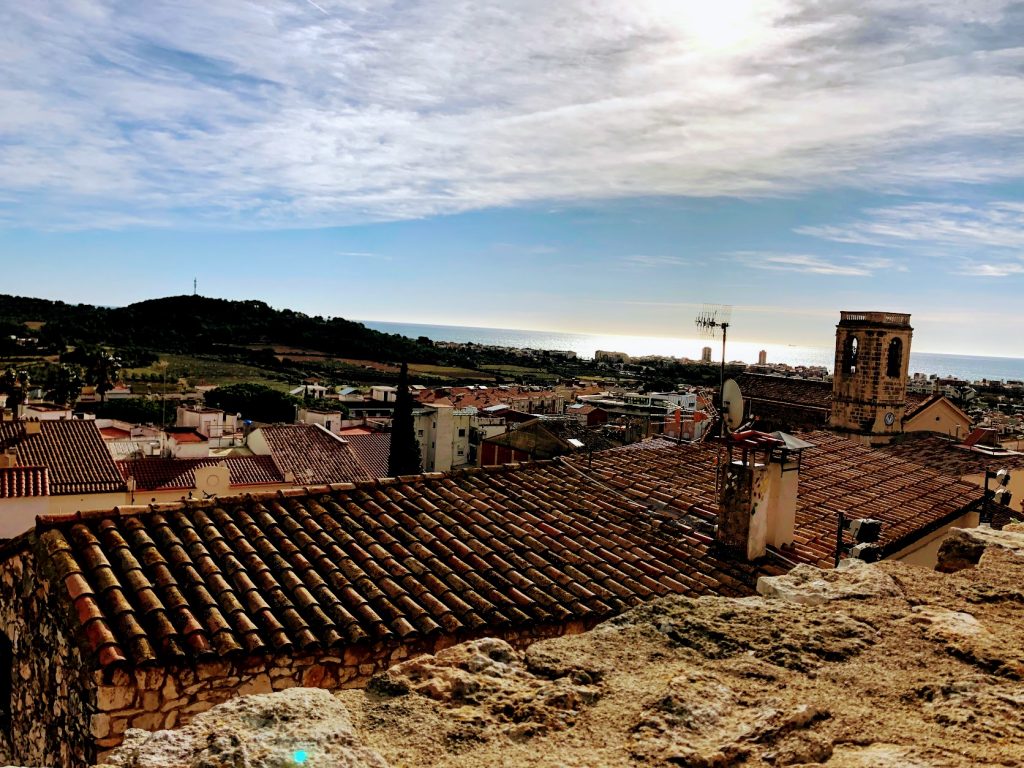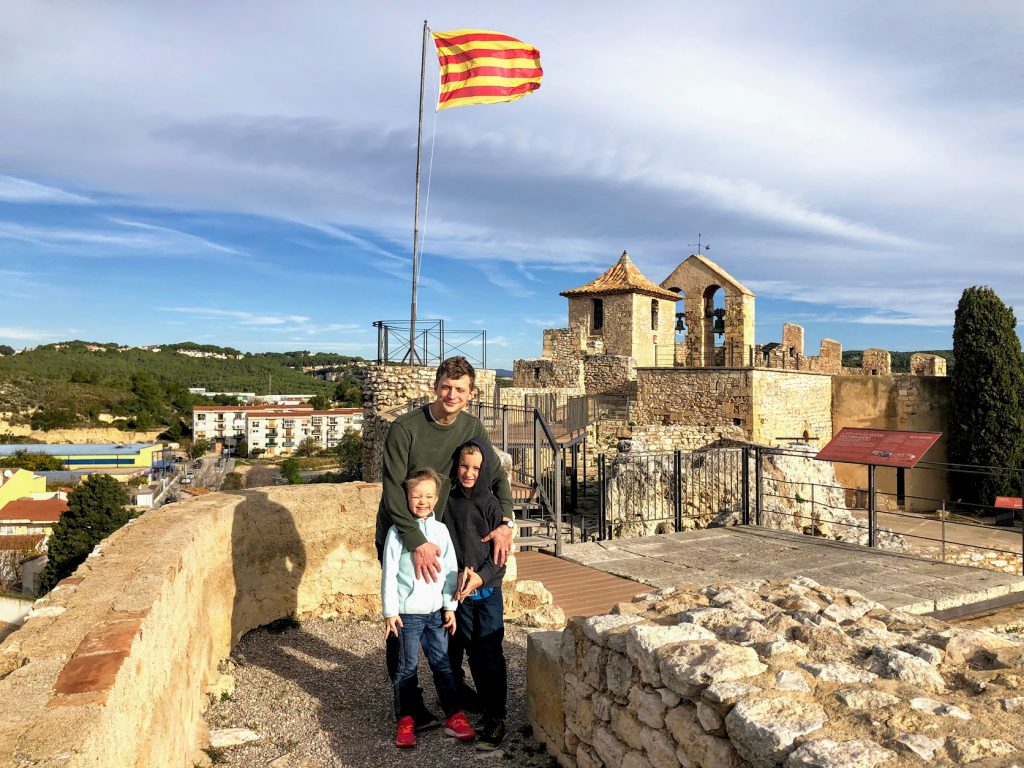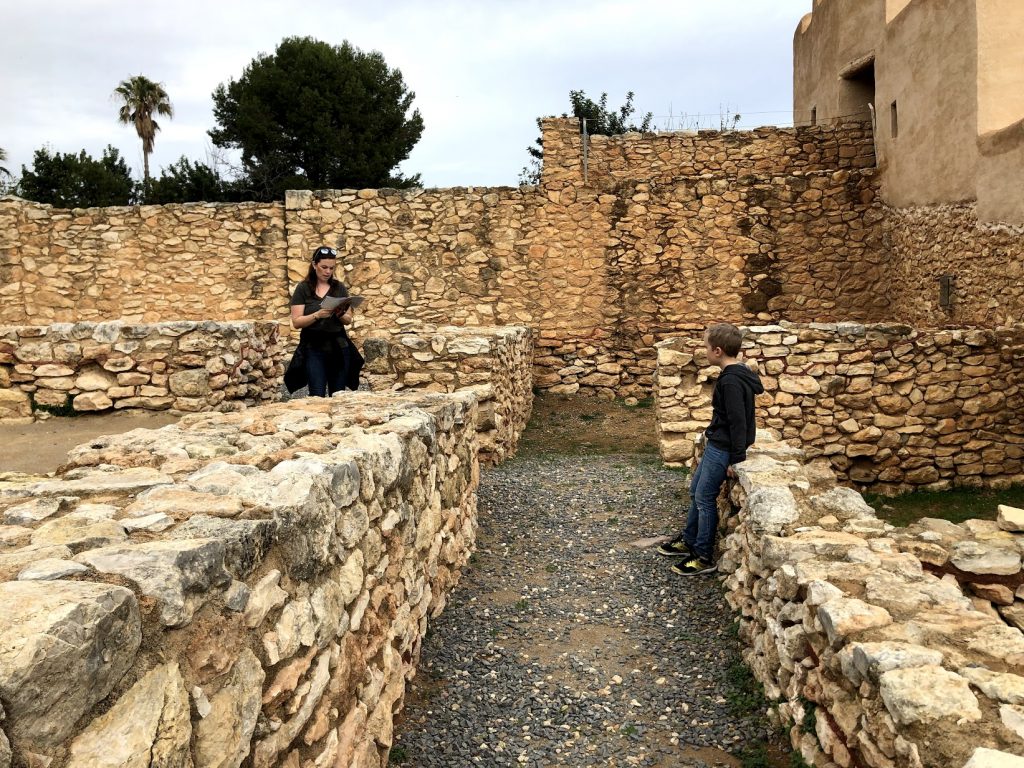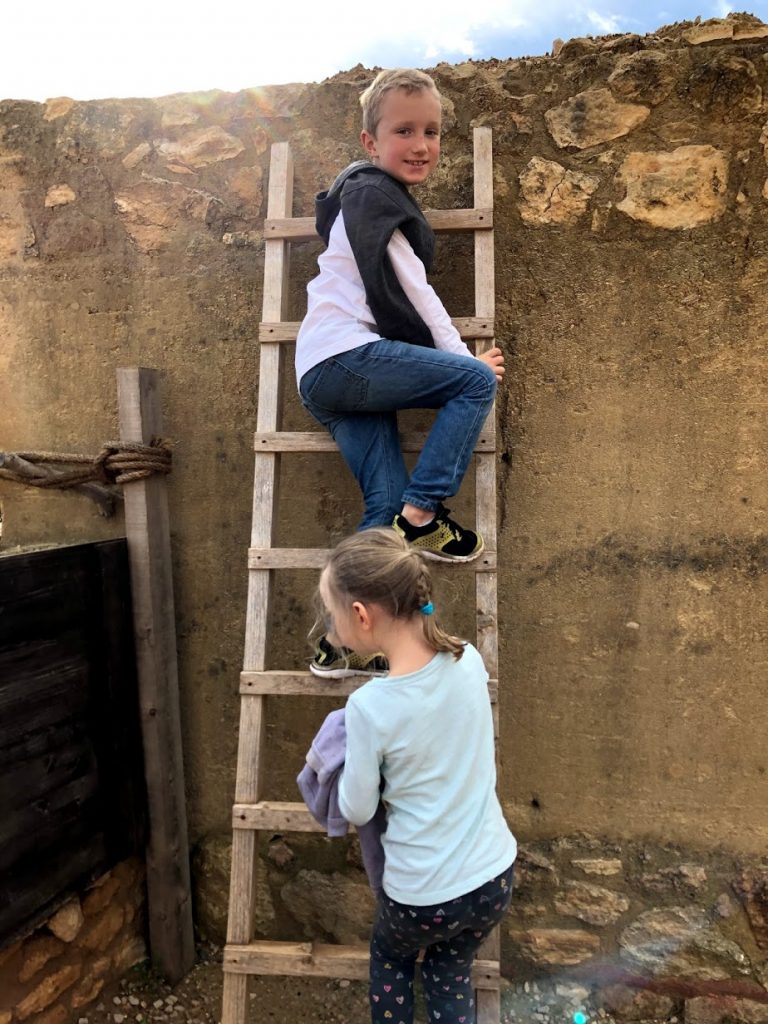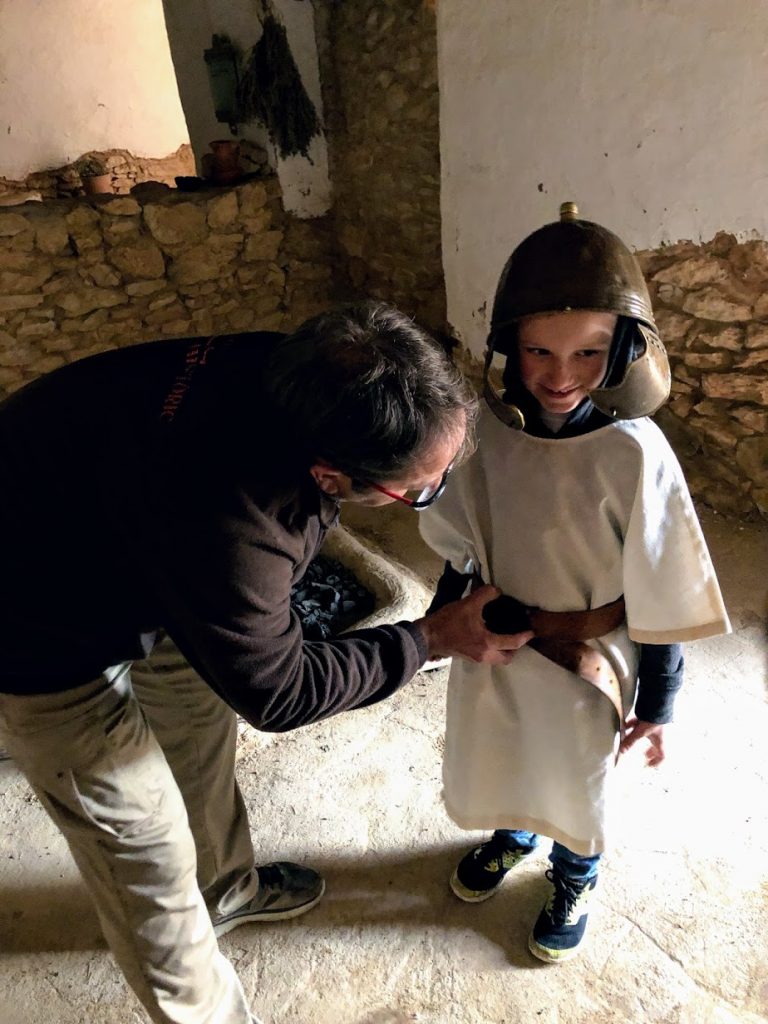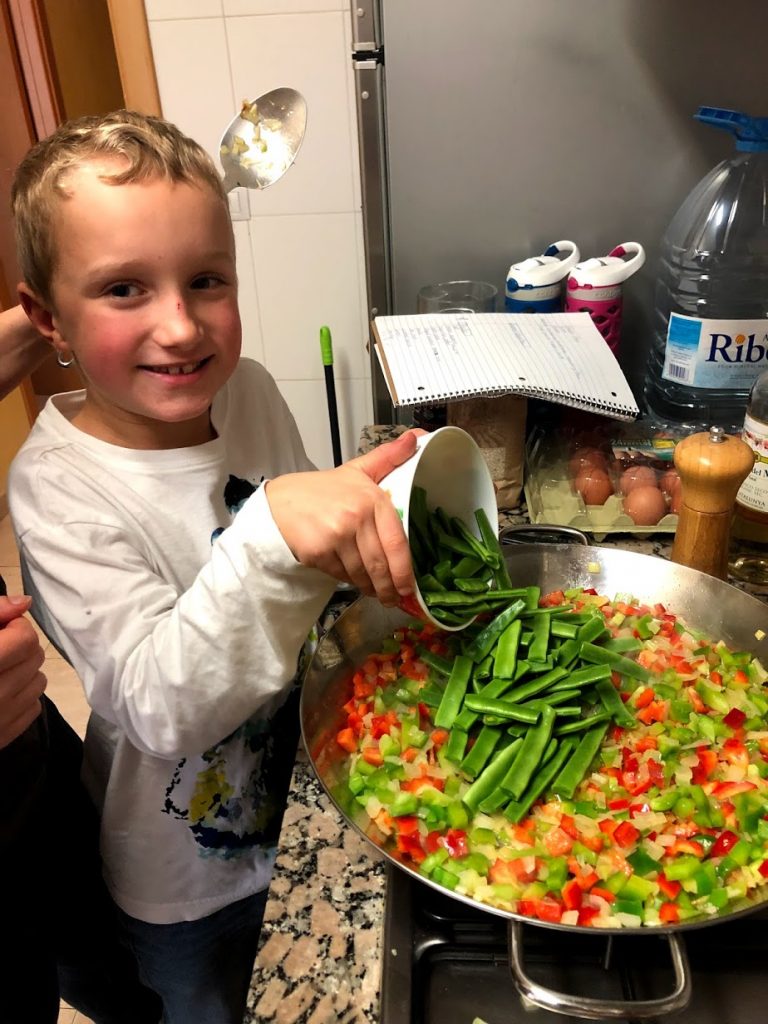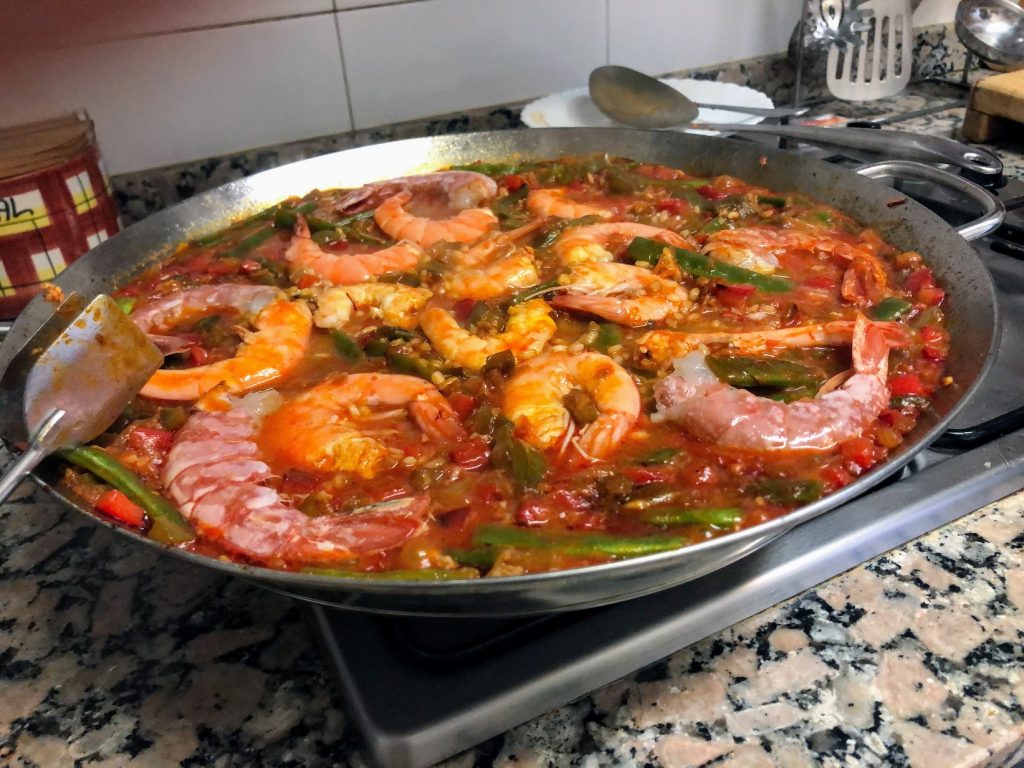There ain’t no party like a Spanish party… ahem, “fiesta”… and the holidays were great celebrations for us to experience! Each had their own quirky flair and it was fun to compare our traditions with Spain’s.
We arrived mid-december, so the first holiday we observed was Christmas. There were some reindeer lights strung along the tops of streets, many stores had signs of “Bon Nadal” (Catalan for “Good Christmas”), English Christmas songs were playing at the grocery store, and there were little stuffed Santas hanging from balconies (I guess there aren’t chimneys here, so Santa had to be creative). We didn’t notice an over-abundance of decorations and general hoopla, though. Just a smattering of reminders.
A new tradition that we probably won’t carry back with us is the Catalan tradition of “Caga Tió”, which means “Poop Log” (that’s actually a nicer translation from the original). Basically, the kids each have a little wooden log in the home, as well as a large, community log in the village square, that has a little happy face on the end. Everyday the kids feed it little scraps of food or orange peels, cover it with a blanket and take care of it. On Christmas Eve, everyone gathers and the kids get sticks. Then, they beat the log while singing a sweet song about: “Poop Log! If you don’t, I will beat you will a stick!” Then, they lift off the blanket on it’s back and find their presents! These are usually little gifts for everyone to share, no big gifts (those are reserved for Three Kings day, later).
While we did not participate in the log beating celebration, we did enjoy our own Christmas fun! We had promised the kids a time to play at the beach, so we walked down the street in our coats and headed out to the sand. The kids had decked themselves in swimsuits, and even though every native Spaniard probably thought we had gone crazy, we let the kids splash in the waves and sand for an hour, despite blue lips and red skin. The loved every minute, and the walk home warmed us up. Arriving home, we had a traditional Christmas Catalan meal together. I made a soup with large, round pasta filled with sausage, a big salad, then lots of seafood and wine. Then we opened a few *tiny* presents that had been tucked along and the kids were thrilled with each one. Ending the evening with last year’s Christmas PJs while Paul read the Luke 2 passage by candlelight was a lovely combination of old, new, traditional, and familiar.
Christmas Day was filled with Spanish pastries from a local bakery, calling Grandparents to video chat, and taking the kids to the local amusement park. They chose two rides each and enjoyed jumping in special harnesses to touch the sky, then crashing into each other with bumper cars; it was a great display of their sibling affections.
The next holiday was New Year’s. We didn’t join in the midnight party, but we did make their version of frozen pizzas (not worth repeating) and repeating the tradition of 12 grapes. At each strike of the bell at midnight it is tradition to eat one grape, which will give you luck for each of the twelve months ahead. So, I found a bunch of grapes at the local farmers market and we put them in a bowl. At 8pm Paul put the sounds of a midnight bell on his computer and then he and the kids ate their grapes. Sounds easy, right? Ha, these “fresh” grapes had seeds in them and were huge and juicy! Natalie looked like an over stuffed chipmunk and was almost crying at stroke 10! It was all in good fun, though, and we ended the evening watching a movie together.
The last holiday celebration was by far our favorite, and a favorite of the entire country, too. El Día del Reyes, the day of the kings, or Three Kings Day, or Epiphany, celebrates when the three magi came to bring gifts to baby Jesus. In Spain it is celebrated with huge parades, a live nativity, a special cake, and gifts.
On the evening of Three Kings Day we waited with hundreds of people in our small Spanish town as the parade warmed up. Music was blaring, people were costumed and the crowds were humming. We watched as each of the three kings and their entourages lined up. Each king sat on a large decked-out throne with their assistant, followed by musicians and their kingly subjects(?). There was candy thrown everywhere and my kids stuffed the pretty candy in their pockets for later. We watched the short parade go through, then walked up to the live nativity. And live means LIVE. There were chickens, donkeys, sheep, roman soldiers with big fires, and a platform with a wooded stable for Mary and Joseph. People were everywhere, and nice little old ladies and men were serving grilled bread dripping with olive oil. Making our way back to our apartment, we soon saw that the parade came right past our door, so we watched it again. Being some of the only children, the paraders loaded Noah and Natalie with candy, some just coming up and putting it into their hands.
After the fun with parades and live nativities, we came back to the apartment to slice the large Three Kings Cake we had bought from a local bakery. It is a pretty cake and tastes like a sweet brea, and it has candied fruit on top. The tradition is that there are objects hidden inside. Whoever gets the piece with the bean in it has to pay for the cake, and whoever gets the piece with the little king figurine is treated like royalty for the day. Each of us chose the slice we wanted and dug in… Noah found the bean and I found the king! Somehow, I still paid for the cake and never saw my crown, but we all enjoyed the cake!
Before bed that night, each child set their boots by the window balcony for the Three Kings to fill with gifts. When they woke up in the morning, they were delighted to find an orange, a piece of the candy I had confiscated, some Euro coins, and a rolled up picture. They had been begging for the next audiobook in a series they are listening to, and the paper showed that we had purchased the next book and it was ready for them to hear.
Overall, we felt like we were able to get a good taste of the Spanish holidays while still enjoying our own traditions with a wonderful slice of peace. It was unique and refreshing.




















